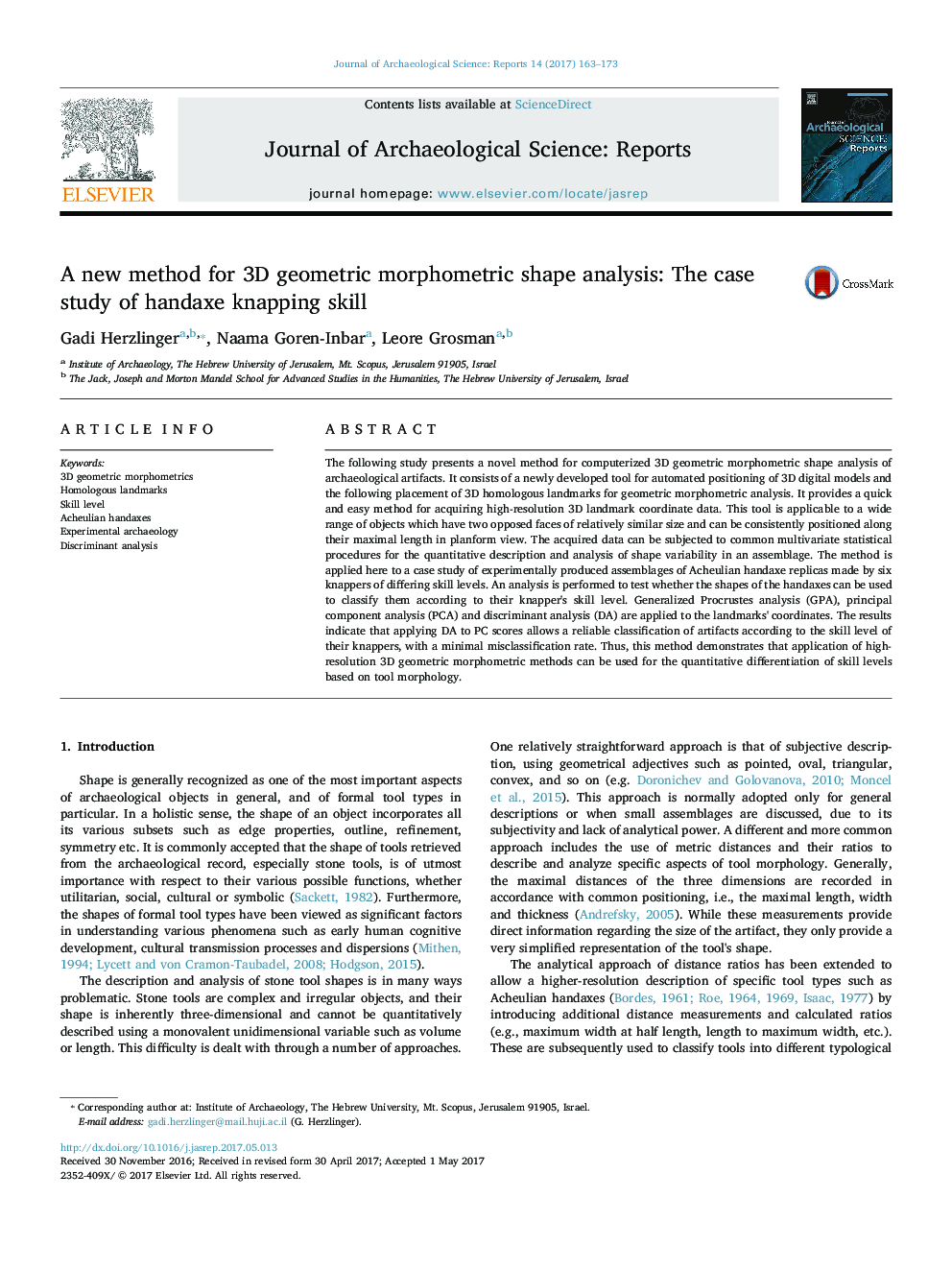| Article ID | Journal | Published Year | Pages | File Type |
|---|---|---|---|---|
| 5112331 | Journal of Archaeological Science: Reports | 2017 | 11 Pages |
Abstract
The following study presents a novel method for computerized 3D geometric morphometric shape analysis of archaeological artifacts. It consists of a newly developed tool for automated positioning of 3D digital models and the following placement of 3D homologous landmarks for geometric morphometric analysis. It provides a quick and easy method for acquiring high-resolution 3D landmark coordinate data. This tool is applicable to a wide range of objects which have two opposed faces of relatively similar size and can be consistently positioned along their maximal length in planform view. The acquired data can be subjected to common multivariate statistical procedures for the quantitative description and analysis of shape variability in an assemblage. The method is applied here to a case study of experimentally produced assemblages of Acheulian handaxe replicas made by six knappers of differing skill levels. An analysis is performed to test whether the shapes of the handaxes can be used to classify them according to their knapper's skill level. Generalized Procrustes analysis (GPA), principal component analysis (PCA) and discriminant analysis (DA) are applied to the landmarks' coordinates. The results indicate that applying DA to PC scores allows a reliable classification of artifacts according to the skill level of their knappers, with a minimal misclassification rate. Thus, this method demonstrates that application of high-resolution 3D geometric morphometric methods can be used for the quantitative differentiation of skill levels based on tool morphology.
Related Topics
Social Sciences and Humanities
Arts and Humanities
History
Authors
Gadi Herzlinger, Naama Goren-Inbar, Leore Grosman,
